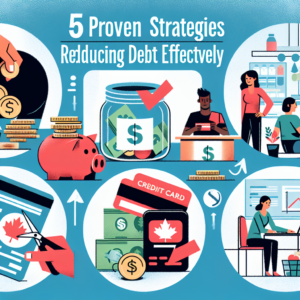In an unpredictable world, financial stability becomes paramount, especially for Canadians facing unique challenges ranging from fluctuating housing markets to the realities of unexpected health issues. An emergency fund serves as a financial safety net, providing peace of mind and security in times of crisis. Building such a fund is not merely a recommendation but a necessity for anyone looking to navigate life’s uncertainties confidently. This article will explore the importance of having an emergency fund and provide essential steps for Canadians to build their savings effectively.
Understanding the Importance of an Emergency Fund for Canadians
First and foremost, an emergency fund is crucial for managing unforeseen expenses. Whether it’s dealing with job loss, unexpected medical bills, or urgent home repairs, having a stash of savings can prevent individuals from turning to high-interest debt options. For Canadians, where the cost of living can be high, especially in urban areas, having a financial buffer can make all the difference between a minor setback and a life-altering financial crisis.
Moreover, the Canadian economy can be volatile, influenced by global factors and domestic policies. Job security is increasingly precarious, and sectors like oil, manufacturing, and even tech are subject to rapid changes. An emergency fund allows Canadians to weather these economic storms without compromising their financial health. It empowers individuals to make thoughtful decisions rather than acting out of desperation when faced with financial emergencies.
Lastly, having an emergency fund fosters a sense of security and mental well-being. Financial stress can lead to anxiety and affect overall quality of life. Knowing that you have funds set aside for emergencies can alleviate this pressure and enable better decision-making in both personal and professional situations. Ultimately, an emergency fund is not just a financial asset; it’s a tool for peace of mind.
Steps to Effectively Build Your Emergency Savings Today
To start building an emergency fund, it’s essential to set a clear savings goal. Financial experts generally recommend saving three to six months’ worth of living expenses. Begin by evaluating your monthly expenses, including rent or mortgage, utilities, groceries, and transportation. By understanding your baseline spending, you can determine a realistic target for your emergency fund that will provide adequate coverage in case of unexpected events.
Next, it’s important to establish a dedicated savings account for your emergency fund. This account should ideally be separate from your regular checking and savings accounts to reduce the temptation to dip into the fund for non-emergencies. Look for high-interest savings accounts or other options that allow for easy access while still earning some interest. Automating your savings can also be beneficial; consider setting up a recurring transfer from your primary account to your emergency fund to foster consistent growth.
Finally, adopt a disciplined approach to saving. This involves both reducing non-essential expenses and seeking additional income sources. Evaluate your current spending habits and identify areas where you can cut back, whether it’s dining out less often or canceling unused subscriptions. Additionally, consider side jobs or freelance opportunities to boost your income. Every little bit adds up, and by actively promoting saving and earning, you can reach your emergency fund goal more quickly.
Building an emergency fund is a vital step for Canadians who aspire to secure their financial futures amidst the uncertainties of life. Not only does it protect against unforeseen expenses, but it also provides peace of mind in an ever-changing economic landscape. By setting clear goals, utilizing dedicated savings accounts, and adopting disciplined financial habits, Canadians can create a robust safety net that prepares them for whatever life may throw their way. Starting today can make all the difference in achieving long-term financial resilience.



